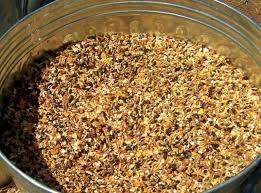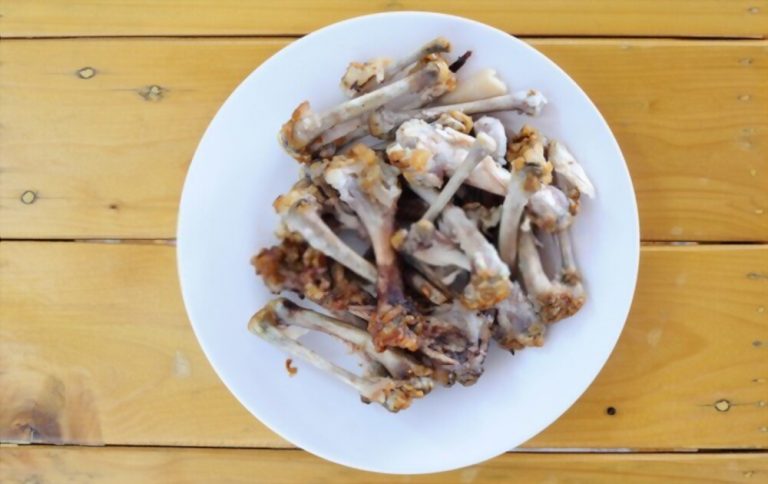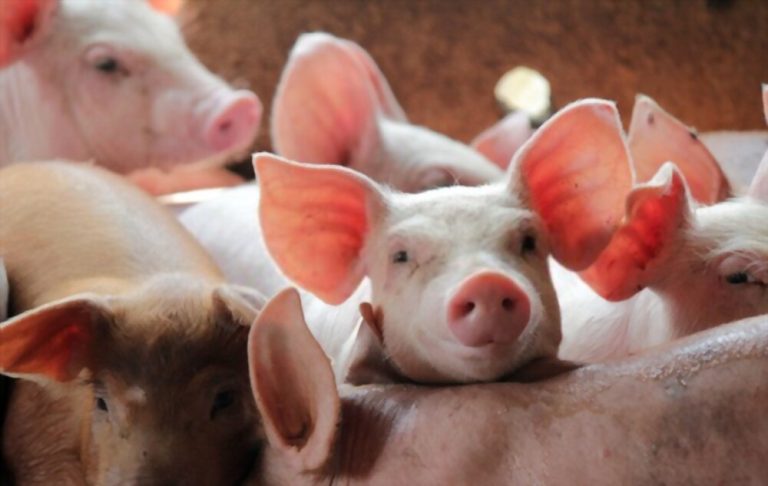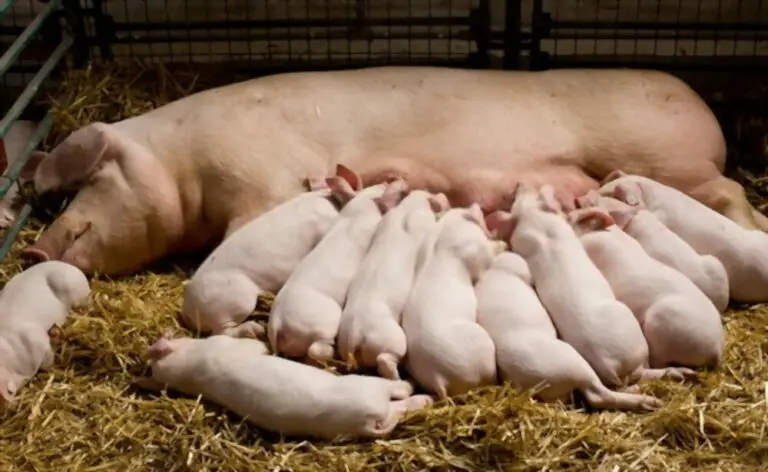When Do Piglets Start Eating Solid Foods? This is one of the most asked questions on pig forums online. We decided to cover everything about weaning your piglets in this article.
Weaning is the stage after lactation, during which the piglets are separated from their mother and generally proceed to feed on only solid food (compound food) and water. It usually lasts 7 to 8 weeks; during this phase, the piglets can reach around 20 to 25 kg.
Weaning can be a traumatic event for piglets. Changes in nutrition from a predominantly milk-based diet to a solid feed pelleted ration can affect the local gut immune status and gut microflora.
Additionally, changing accommodations and mixing piglets can affect the piglet’s physiological, nutritional, immunological, and behavioral status. Adapting to new feed can be a complicated process for weaning piglets; necessary measures should be taken to ensure a smooth transition of lactating piglets to weaning.
Shortly we’ll be looking into natural weaning, commercial weaning practices, how weaning age affects the behavior of pigs, tips for better weaning, etc.
Natural Weaning of Piglets

Natural weaning in pigs is a steady process that cannot be defined as a specific period but is a shift from relying on the sow’s milk to other feed. This transition from milk to other food sources is observed for sows in semi-natural environments when pigs are between 12 and 17 weeks old.
Sows raised outside eventually begin to spend more and more time away from their piglets. This indicates that sows find piglets an increasing challenge as they get older. So even though the weaning process can be stressful for piglets, it reduces stress for sows in many ways.
Commercial Weaning Practices
Prolonged lactation reduces the number of litters produced annually, as the sows cannot come into heat when they have a nursing litter. In most places, the weaning age on commercial pig farms has steadily decreased, with some piglets now being weaned between 21 and 34 days, and others as young as 17 to 20 days are sometimes also selected.
Over the past decade, segregated and medicated early weaning practices (SEW and MEW [7–14 days, respectively]) have been used by pig producers to optimize the health of their piglets, improve feed efficiency and growth rate, and therefore improve economic value.
The main economic advantage of early weaning is directed towards the sow herd. Sow herds can produce more pigs annually with an average weaning window of 17 days compared to 28 days. Using a separate facility potentially limits the spread of pathogens from the sow to the piglet.
However, the reported disadvantages of early weaning management practices include inconsistent growth performance during the finishing phase, declined post-weaning gains, and abnormal feed consumption. In one study, piglets were weaned at 2, 3, or 4 weeks. The average daily gain (1.2 lb. per day) of piglets weaned at four weeks was better than those weaned at two weeks (0.79 lbs. per day).
However, six weeks after weaning, the piglets’ body weight was similar in all groups. Physiological differences were also observed in piglets weaned at different ages. For example, piglets weaned at three weeks had higher cortisol, a stress-relieving hormone, than those weaned at eight weeks. Additionally, the immune systems of these little pigs were not as responsive to disease challenges.
When do piglets start eating solid food?
Piglet weaning involves transitioning from mother’s milk to a solid diet, often starting when the piglets are just a few weeks old. Like other mammals, pigs initially rely entirely on their mother’s milk for nourishment, which is particularly rich in proteins and valuable antibodies.
However, as piglets mature, their mother’s milk cannot satisfy their nutritional needs. The transition period typically occurs around 2-3 weeks when piglets show interest in other food sources. During this time, baby pigs start to eat solid food such as creep feed, a nutritional supplement usually given as a starter diet designed to meet their dietary needs.
Notably, once piglets start eating solid food, their digestive systems undergo physiological changes to enable the digestion of complex carbohydrates, proteins, and fats in their new diet. This transition is a crucial phase in the growth and development of baby pigs toward becoming healthy and productive adults.
Weaning Age for Pigs
Weaning age can also affect the behavior of piglets after being separated from their mother. For example, when piglets were weaned at six days compared to 28 days, the younger piglets showed more walking, vocalization, belly nosing, and a growth check of 15 compared to 18 pounds (7 vs. 8 kg) after weaning.
In another study, piglets were weaned at 3, 4, and 5 weeks. The younger piglets were more vocal at weaning (an average of 3.6 calls/min), but the frequency for all groups decreased by the fourth day (1.6 calls/min) post-weaning.
Piglets may also experience an increase in undesirable behavior. These behaviors may include tail chewing, ear sucking, escape actions, nose and belly sniffing, and persistent nose thrusting.
Recent work has highlighted an association with post-nursing rather than pre-nursing behaviors. Belly-nosing has always been considered a sign of compromised welfare for the performer but can certainly have health and welfare repercussions (umbilical cord damage) for the recipient pigs.
The extent of belly-nosing is related to the age of weaning, which is more common in piglets weaned at 1–2 weeks than in piglets weaned at three weeks or older. However, when looking into later-weaned piglets, more nosing is observed in piglets at three weeks of age than at 4 and 6 weeks.
Other behaviors that may be affected by weaning age include feeding time. In a study, pigs were weaned at 7, 14, and 28 days. At seven days, piglets spend less than 1% of their time at the feeder in the first two days after weaning, compared to 3% for piglets at 14 days and 5% for others weaned at 28 days.
Weaning Tips for Pig Owners

1. Start with Healthy Piglets
This appears obvious, but it is vital to have an easy weaning process. Healthy piglets will start eating early, and this is necessary to prevent the weaning dip.
People always focus on solving problems that the piglet may encounter after weaning, but it is important not to forget to look into the farrowing rooms. Problems may be due to reduced milk production, lack of uniformity of piglets at birth, a problem with E. coli, etc. Problems that start very early in a piglet’s life are difficult to fix later.
2. Comfortable and clean accommodation
Piglets loathe draughts and need warmth; rooms should be around 25°C. When taken to the nursery, the rooms should be cleaned and disinfected. It is essential to dry the piece after cleaning.
This can sometimes be a problem when there is little time between cleaning and moving the pigs. Especially in cold climates where it is too expensive to heat rooms properly, it can be tempting to save on heating costs and keep piglets in a room that is still too humid and cold.
This is a significant risk for health problems. Piglets need to expend much energy to keep their body temperature high enough.
3. Keep piglets from the same litter together.
Research has shown that mixing piglets from different litters is a significant risk factor for diseases such as Actinobacillus pleuropneumonia (APP) and Streptococcus suis.
Significantly around weaning when they do not have a fully developed immune system and maternal antibody protection is reduced. When piglets are moved into the nursery, try to minimize mixing as this can spread disease to the rooms.
4. Train pigs to eat
One of the biggest challenges after weaning is feeding the piglets. They should be trained before weaning. Tasty and fresh food can be given in small portions from the second week of life.
The aim is to introduce the piglets to bowl feeding so they can easily find their new food source after weaning. It is advised not to change this nursery food during the first days after weaning.
A spontaneous transition will reduce the number of piglets that will not eat on the first day. These hunger strikes are more likely to develop problems in the coming weeks. If the system allows, use a feeding system where all the piglets can eat simultaneously.
5. Provide clean water and fresh food.
Piglets are vulnerable to infection after weaning. All necessary measures should be taken to reduce the risk of exposure to pathogens.
Reducing the number of pathogens in water and food is a way place to start. But there are other ways for pigs to become infected orally, such as through contact with contaminated feces, other pigs, etc.
The best advice is to use organic acids in feed and water solutions to reduce the risk of oral infections. The organic acids kill the pathogens in the feed and water and those in the piglet’s stomach. This is a very common and cost-effective method to improve the performance of piglets after weaning.
Conclusion
The biggest problem with addressing the issue of age and welfare is the results when comparing two or more weaning ages. Some undesirable symptoms have been noted in early-weaned pigs, such as inconsistent growth rates, abnormal feed intake, decreased cellular immune responses, and undesirable behavior.
Weaning pigs at about 21 days has become standard practice in most places. However, farm economics and productivity, sow and piglet welfare, and available facilities will determine the best weaning age on a given farm.
References







